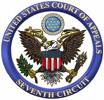Fairness in Federal Cocaine Sentencing Policy
 As is notorious, federal law treats one gram of crack cocaine the same as 100 grams of powder cocaine. Thus, a defendant caught with five grams of crack faces the same five-year mandatory minimum prison term as a powder cocaine offender in possession of 500 grams; 50 grams of crack produces the same ten-year minimum as five kilograms of powder. Despite a steady stream of criticism from academics, judges, and the United States Sentencing Commission over the past 20 years, Congress has declined to revisit the 100:1 ratio. In 2007, the Commission took a small step towards remedying the imbalance, reducing crack sentences under the advisory federal sentencing guidelines (which also contained a 100:1 crack/powder disparity) by two levels, then designating the amendment for retroactive application. As a result, thousands of federal crack prisoners received sentence reductions averaging about 17 percent. However, as the Commission itself acknowledged, true reform would require Congress to modify the 100:1 ratio and the resulting statutory mandatory minimum terms. Based on a change in position by the last major player supportive of the 100:1 disparity, the United States Department of Justice, that reform may, finally, be imminent.
As is notorious, federal law treats one gram of crack cocaine the same as 100 grams of powder cocaine. Thus, a defendant caught with five grams of crack faces the same five-year mandatory minimum prison term as a powder cocaine offender in possession of 500 grams; 50 grams of crack produces the same ten-year minimum as five kilograms of powder. Despite a steady stream of criticism from academics, judges, and the United States Sentencing Commission over the past 20 years, Congress has declined to revisit the 100:1 ratio. In 2007, the Commission took a small step towards remedying the imbalance, reducing crack sentences under the advisory federal sentencing guidelines (which also contained a 100:1 crack/powder disparity) by two levels, then designating the amendment for retroactive application. As a result, thousands of federal crack prisoners received sentence reductions averaging about 17 percent. However, as the Commission itself acknowledged, true reform would require Congress to modify the 100:1 ratio and the resulting statutory mandatory minimum terms. Based on a change in position by the last major player supportive of the 100:1 disparity, the United States Department of Justice, that reform may, finally, be imminent.
In recent testimony before the Senate Judiciary Committee, Subcommittee on Crime and Drugs, Assistant Attorney General Lanny Breuer indicated that the Administration “believes Congress’s goal should be to completely eliminate the sentencing disparity between crack cocaine and powder cocaine.” It is too soon to tell whether Congress will completely eliminate the disparity, as the Justice Department appears to advocate, or merely narrow it to, say, 10:1 or 20:1, as the Commission and some legislators have previously recommended. Whatever it elects to do, Congress should consider retroactive application of the statutory change. Experience under the Commission’s recent crack guideline amendment shows that courts are well-equipped to apply the change to existing sentences.

